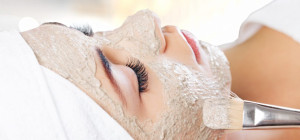Everyone wants a mega-watt smile but teeth whitening isn’t for everyone. Here’s what your dentists wich you should know about teeth whitening before you get gleaming.
You’ll need a checkup first
Before getting that Hollywood smile, it is vital to have a dental exam for ensuring that your mouth is healthy. Dental problems such as gum diseases and cavities should be addressed before bleaching. Dentists often see people with a mouth full of cavities who wish to have a whiter mouth before they have a healthy mouth. But if you don’t address these issues then you will have pain and sensitivity when you try to bleach.
Slow and steady beats fast and furious
We are all immediate gratification junkies, but whitening your teeth several shades in one day with an in-office laser treatment may not be the most comfortable option. Bleaching can cause sensitivity and sometimes pain in the teeth or mouth. Dentists use a special fluoride desensitizing paste before performing the teeth whitening procedures in order to avoid insensitivity and discomfort but some sensitivity following bleaching is considered as normal. Hence slow and steady is better sometimes. So you might want to skip the in-office treatment and go straight to the custom take-home trays. You may also try the toothache home remedies to ease the pain.
You can try this at home
While in-office of the dentist, light activated procedures will jumpstart the teeth whitening process. The professional take-home kits sold at the dental offices work very well to keep your pearly whites well as compared to the teeth whitening products found at the drug stores. The custome whitening mold can be extremely effective for teeth whitening at home, especially when combined with a light-activated procedure.
It’s not one and done
You’ll probably need to use the custome trays at home, if you don’t want to see the sparkle lose its luster. The teeth whitening needs commitment and maintenance, you simply can’t bleach and forget it. In fact, you can expect the shiny white color to fade within six months unless you do the monthly touch-ups at home using a professional-strength product. Don’t use the tooth-whitening products too often as they wear away the microscopic amounts of tooth enamel that could increase the tooth sensitivity and even cause tooth decay.
You might have to watch what passes your lips
Certain foods and beverages such as coffee, tea, wine and even the blended green juices can cause tooth discoloration. Cutting them out from your diet or limiting them will help your teeth to stay white post-procedure. Similarly, certain foods such as seeds, strawberries, nuts and cauliflower will help whiten the teeth and speed up the whitening process.
Go OTC if you don’t need TLC
Walk into a drugstore and grab a teeth whitening product off the shelf, of you are looking to whiten by just a shade or two. Over the counter products may be satisfactory for non-sensitive teeth in need of only slight whitening. The whitening strips or mold lights using a mild peroxide solution which may work well. Peppermint oil treats sensitivity and potassium nitrate shields the sensory nerves under the gum line so that you won’t be clutching your jaw in pain as with other pro treatments. You can choose a more budget friendly option which uses enamel safe whiteners for erasing the stains and yellowing in three days with results in 20 days. You can try brushing your teeth using an electric toothbrush having blue light technology for speed whitening. Apply the whitening gel along with the regular toothpaste and brush for two minutes, twice everyday for pearlier whites in two days.
Toothpastes don’t really do the trick
Toothpastes advertising whitening powers don’t stick around long enough to deliver their promise. Some have whitening solution in them, but they’re not on the teeth long enough to be effective. They won’t intrinsically change the internal color of your teeth effectively. Instead, they use the abrasive ingredients for removing surface stains from things like coffee and cigarette smoke. The whitening formulas can make teeth sensitive over time.
Fake teeth may not whiten
Older restorations such as crowns or bonds will not whiten during this process and you may end up with mismatched coloring if you don’t replace the older restorations. Expect to wait seven to ten days post bleaching to pick the shade of a new crown or veneer, if you choose to replace older restorations.
Not all stains come out easily
If your teeth were overexposed to fluoride during the first eight years of life, you may have a cosmetic condition called fluorosis- the white spots or fine, chalk line lines on the surface of your teeth. They can be difficult to treat and require multiple bleaching treatments to improve. Follow simple, easy tips to maintain a healthy, beautiful smile.
Reference:
http://www.healthcontroltips.com/2016/08/10-myths-about-dentists.html
http://www.thinkhealthmag.com/top-7-questions-you-should-be-asking-your-dentist/







